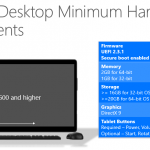The support for Unified Extensible Firmware Interface (UEFI) in Windows Vista and Longhorn Server will not be at launch. Instead it’s planned only by the end of 2007, on the subsequent release of Windows Vista, most likely in Service Park 1 or something that coincides with, or will be very close to, the launch of Windows Server Longhorn.
The UEFI technology advantages include faster boot times and available in 32-bit and 64-bit versions, whereas Bios is limited to 16 bits. Beside, UEFI also supports rich graphics during boot-up, eliminating text prompts and low quality images.
The current Windows Vista Beta 2 supports UEFI to allow developers and device manufacturers to test the technology, but will be stripped out at a later stage.






